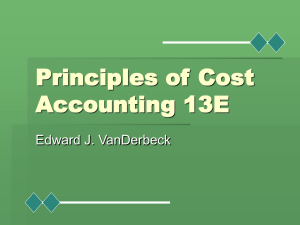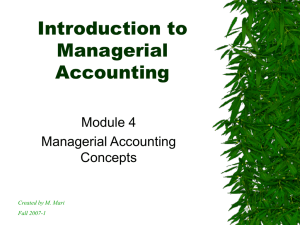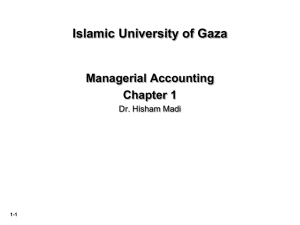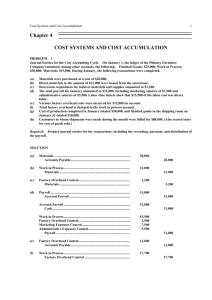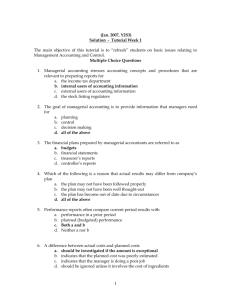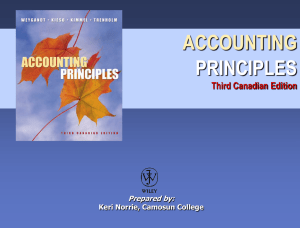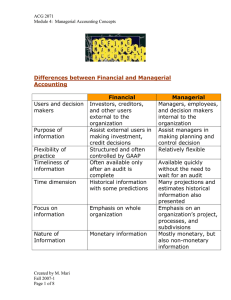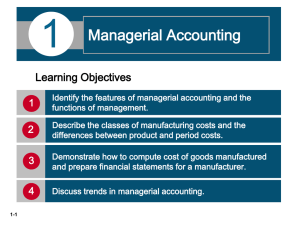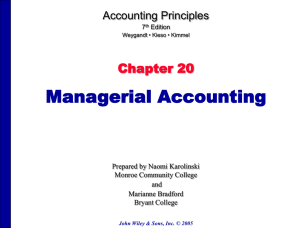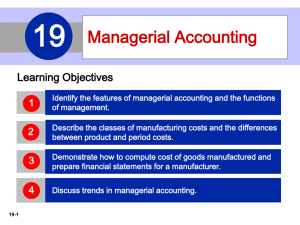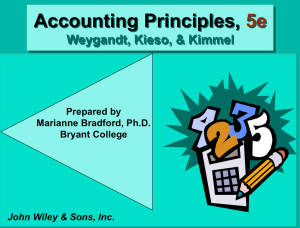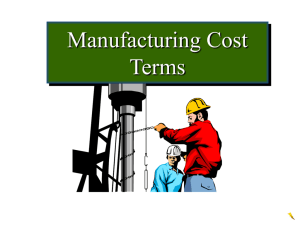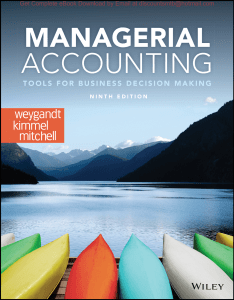Manufacturing Costs
advertisement
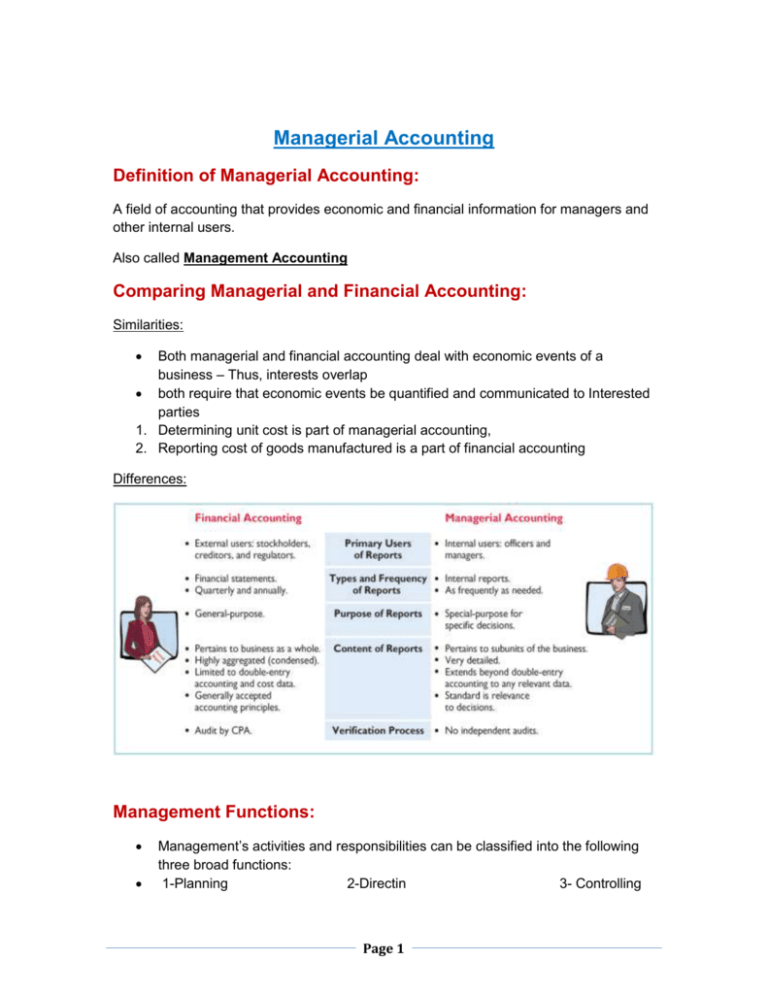
Managerial Accounting Definition of Managerial Accounting: A field of accounting that provides economic and financial information for managers and other internal users. Also called Management Accounting Comparing Managerial and Financial Accounting: Similarities: Both managerial and financial accounting deal with economic events of a business – Thus, interests overlap both require that economic events be quantified and communicated to Interested parties 1. Determining unit cost is part of managerial accounting, 2. Reporting cost of goods manufactured is a part of financial accounting Differences: Management Functions: Management’s activities and responsibilities can be classified into the following three broad functions: 1-Planning 2-Directin 3- Controlling Page 1 Managerial Cost Concepts: Manufacturing Costs Manufacturing consists of activities and processes to convert raw materials into finished goods. In contrast, a merchandising firm sells goods in the form in which they were purchased. Manufacturing costs are typically classified as: 1- Materials: Raw Materials Basic materials and parts used in manufacturing process Direct Materials Raw materials that can be physically and directly associated with the finished product during the manufacturing process Indirect Materials 1. Raw materials that cannot be easily associated with the finished product 2. Not physically part of the finished product or they are an insignificant part of finished product in terms of cost 3. Considered part of manufacturing overhead 2-Labor: Direct Labor Work of factory employees that can be physically and directly associated with converting raw materials into finished goods Page 2 Indirect Labor Work of factory employees that have no physical association with the finished product or for which it is impractical to trace costs to the goods produced 2-Manufacturing Overhead Costs that are indirectly associated with manufacturing the finished product Includes all manufacturing costs except direct materials and direct labor Allocation of overhead to products can present problems Also called factory overhead, indirect manufacturing costs, or burden Review Question: Which of the following is not an element of manufacturing overhead? a. Sales manager’s salary. b. Plant manager’s salary. c. Factory repairman’s wages. d. Product inspector’s salary. Product versus Period Costs 1-Product Costs Components: direct material cost, direct labor cost, and manufacturing overhead Costs that are a necessary and integral part of producing the product Recorded as inventory when incurred, thus may be called inventoriable costs Not an expense until the finished goods inventory is sold then cost of goods sold 2-Period Costs Matched with revenue of a specific time period and charged to expense as incurred Non-manufacturing costs Deducted from revenues in period incurred to determine net income Includes all selling and administrative expenses Page 3 Manufacturing Costs in Financial Statements: Income Statement The income statement for a manufacturer is similar to that of a merchandiser except for the cost of goods sold section. Cost of Goods Sold Components (Merchandiser versus Manufacturer): Page 4 Balance Sheet – Inventories Merchandising Company -One category of inventory: Merchandise Inventory Manufacturing Company-May have three inventories: 1- Raw Materials 2-Work in Process Page 5 3- Finished Goods Balance Sheet – Inventories: Chapter Review Indicate whether each of the following costs of an automobile manufacturer would be classified as direct materials, direct labor, or manufacturing overhead. ______ a. Windshield ______ b. Engine ______ c. Wages of assembly line worker ______ d. Depreciation of factory machinery ______ e. Factory machinery lubricants ______ f. Tires ______ g. Steering wheel ______ h. Salary of painting supervisor Identify whether each of the following costs should be classified as product costs or period costs. ____________ a. Manufacturing overhead ____________ b. Selling expenses ____________ c. Administrative expenses ____________ d. Advertising expense ____________ e. Direct labor ____________ f. Direct material Page 6 Page 7


